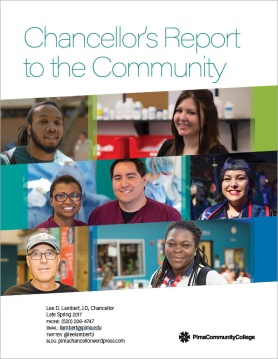 The College held its fifth annual Futures Conference last week. The conference is an important element in our strategic planning process, as it brings together students, Governing Board members, community members and PCC employees to discuss matters of College-wide importance, and to engage in small-group discussions that surface new ideas. Futures Conferences are a vehicle for constructive community engagement — we partner with the public, seeking advice and innovation.
The College held its fifth annual Futures Conference last week. The conference is an important element in our strategic planning process, as it brings together students, Governing Board members, community members and PCC employees to discuss matters of College-wide importance, and to engage in small-group discussions that surface new ideas. Futures Conferences are a vehicle for constructive community engagement — we partner with the public, seeking advice and innovation.
This year’s conference focused on three areas:
- Guided Pathways, clearly defined roadmaps to credentials that let students get the best return on their investment of time and resources.
- Centers of Excellence, which enhance student success and economic development by providing students with rigorous, best-in-class training so they can succeed in leading-edge sectors of the economy.
- Diversity and Inclusion, drivers of equity that need to be addressed if organizations are to succeed economically in a rapidly globalizing 21st
I opened with remarks that put the College’s work into prospective. New technological, economic and demographic realities are converging to create an age of accelerated change not seen since the 1440s, when Johannes Gutenberg introduced mechanical printing and ushered in the modern age. These changes, which range from the rise of Artificial Intelligence to persistent education and skills gaps, present higher education with numerous challenges. The foremost is realizing opportunities within our grasp today while preparing for opportunities of the future. This is a formidable task, given that 65 percent of today’s first-graders will be employed in jobs that currently do not exist. My path forward for the College, unsurprisingly, is to improve delivery of instruction and services so our students have the knowledge, skills and abilities to thrive regardless of what the future may bring.
Clearly, given this uncertain landscape, the College needs the insights of its partners, and Future Conferences are an excellent way to leverage their creative energy. Past conferences have resulted in real change. In 2017, attendees identified as priorities “Establish guided pathways for in-demand programs” and “Align College programs, processes, systems and resources to support economic opportunities within Pima County through relationships with local business and industry.” Those insights were woven into the 2017-2021 Strategic Plan, which was approved by the Governing Board in May 2017. I am confident this year’s Futures Conference will yield similar advances.



